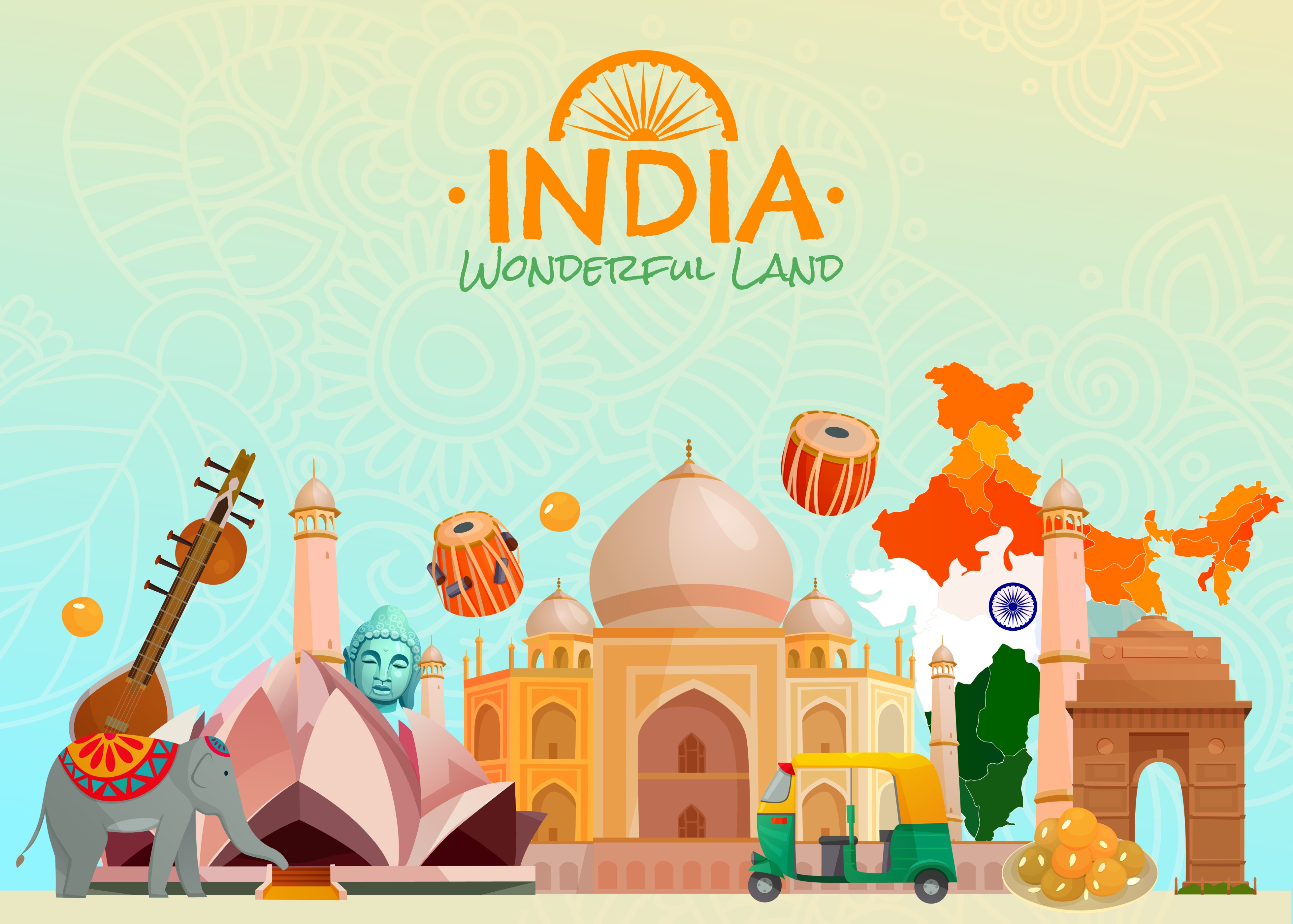Indian culture and heritage are one of the most diverse in the world. Age-old practices are still followed with much the same reverence and devotion to detail. It is History itself being kept alive through traditional deeds and ancient rituals. What is Indian culture and tradition? From among thousands, we’ve hand-picked 5 unique ones below.
1. Religious Festivals Culture of India
The best way to see into the souls of Indian people is through their religious festivals. It isn’t just Hindus who celebrate such festivals here. Christians. Muslims, Sikhs, Buddhists, and others are all part of this wholesome package of ancient traditional fervour. Diwali, Holi, Buddha Poornima, Christmas, Eid, Baisakhi, Good Friday, Mahavir Jayanti, and Navratri are just a smidgen of the hundreds of religious-spiritual observances that India has been indulging for decades, if not centuries.
Must know: Top Kite Flying Festivals Across World – want to Indulge in Kite Flying?
2. Fasting Culture of India
You may have assumed this ‘health trend’ originated only recently, but in India the act of fasting has been part of ancient wisdom since time immemorial. Also called ‘Upvas’ or ‘Vrats’, fasting was first propagated by the Hindus. It is often associated with self-sacrifice to honour or please various deities (gods and goddesses). Hinduism has always enjoyed a strong root in Science, making this ‘ritual’ in truth supremely healthy. Fasting has proven to cleanse one’s system, after all. And, as the saying goes, cleanliness is next to godliness. As international customs go, this one started at home in India.
Must Know: Ganesha Chaturthi In Goa – The Celebration Of Good Beginnings
3. Dance Culture of India
Some of the most diverse dances can be found in India, with many of them going back millennia and finding mention in ancient texts like the Hindu Sanskrit one titled ‘Natyashashtra’. Few things define a culture like their dances. India is known as the originator of 8 globally recognized classical dances: Kathakali (Kerala), Oddisi (Odisha), Mohiniyattam (Kerala), Manipuri (Manipur), Kuchipudi (Andhra Pradesh), Sattriya (Assam), Kathak (North, West and Central India), and Bharatnatyam (Tamil Nadu). Drama, mythology, religion, folk stories, Indian values, and fiction all blend beautifully in each of these dances, altogether comprising hundreds of thousands of artistic renditions that are unique to India and its culture.
4. Cuisine Culture of India
You may find similarities to several Indian culture images abroad, but its cuisine is one-of-a-kind. Each state that makes up the Republic of India has its own specialized foods, with many a common meal re-made or evolved locally to create something exclusive to that state. Millions of recipes and ingredients are unique to Indian alone. Health and ancient wisdom go into several Indian meals. All courses are covered, from appetizers to desserts. Even the manner in which the food is served, especially the order it is served in, has deep bio-scientific (physical health) meaning that still defies credibility. How did different cultures in India know about all this at a time when there was no electricity or internet? Cuisine connects India and the world in more ways than one. Some of the most prominent cuisines in the country include: Rajasthani, Gujarati, Bengali, Mughlai, South Indian, and Punjabi. Kashmiri cuisine in particular needs a special note – it boasts an amalgamation of Afghan, Persian, and Central Asian cooking.
Must Know: Shopping in Kashmir? 5 Things to Put on Your Kashmir Shopping List
5. Martial Arts Culture of India
Most people have wrongly assumed that Kung Fu originated in China. In truth, its techniques harken back to ancient Indian martial arts. Whether it is using weapons or going hand-to-hand, combat in India has its own unique and ancient heritage. One may even say that the cultural diversity in India extends to its martial arts scene. One of the most remarkable points to keep in mind is that some types of Indian martial arts are practiced exclusively for healing purposes. These days, people practice Indian versions of combat for fitness and self-defence reasons.
There is much and more to India than meets the eye. Often have its own citizens forgotten the traditional splendour and historical wealth of their nation. If we can turn inwards, as some of our own religions teach, we just may see an end to the ‘Brain Drain’ that has come to inflict this gorgeous country.
India stands in its own unique light, one that far outshines the light reflected by the great Kohinoor Diamond itself – the largest of its kind, found in India, and currently gracing the crown of the Queen of England. India has survived great hardships and colonial takeovers. Today, it boasts renown as a rising Superpower. Its Space Program is ever-evolving, to name just one sector. As for the Wuhan virus pandemic, it has proved that India is truly the ‘Pharmacy of the World’.
Must Know: A Visit to the Sacred Varanasi – Travellers of India
